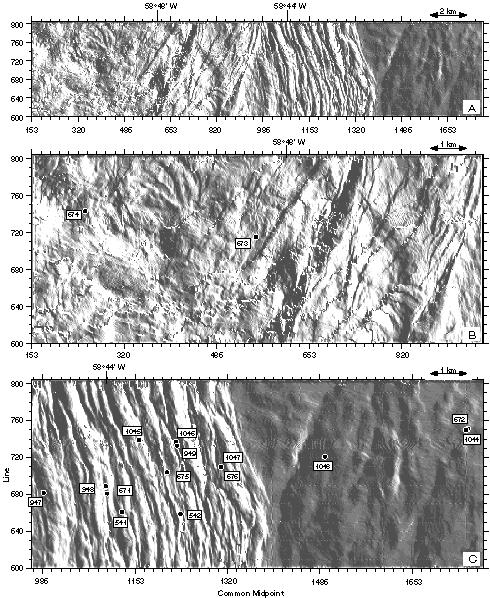171A Preliminary Report Figures

Figure 4. (A) Shaded relief image of the seafloor within the 3-D seismic survey area. The seismic horizon was interpreted along the zero crossing between the first negative and first positive seafloor reflections on a grid of roughly every 10th line and every 50th common midpoint. Between interpreted lines, the horizon was mapped using the LandmarkTM Zone Autopicker algorithm, which extends horizon interpretations throughout the data set by following the specified trace characteristics. The resultant horizon contains a value for every line and common midpoint of the 3-D survey (bin spacing is 25 m x 15 m respectively). Illumination is from the southeast, and gray scale shades are histogram equalized. Overall bathymetry is increasing to the east, but small scale bathymetric variations reveal at least three distinct structural regions. Within the first region, between common midpoints 480 and 920, a series of south-southwest-trending lineations are visible downstepping to the north-northwest. The second region, from common midpoint 920 to 1386, encompasses south-southeast-trending lineations related to thrusting in the toe of the prism. East of common midpoint 1386, within the third structural region, bathymetric changes are subdued but a series of south-southwest-trending lineations is visible. These downstep to the north-northwest and are related to the topography of the underlying oceanic crust. (B) 200% zoom of the area between common midpoints 153 and 986 showing locations of Leg 110 sites. (C) 200% zoom of the area between common midpoints 986 and 1781 showing the locations of sites drilled during Legs 110, 156, and 171A.
To 171A Figure 5A
To 171A Table of Contents
Publications Homepage
ODP Homepage